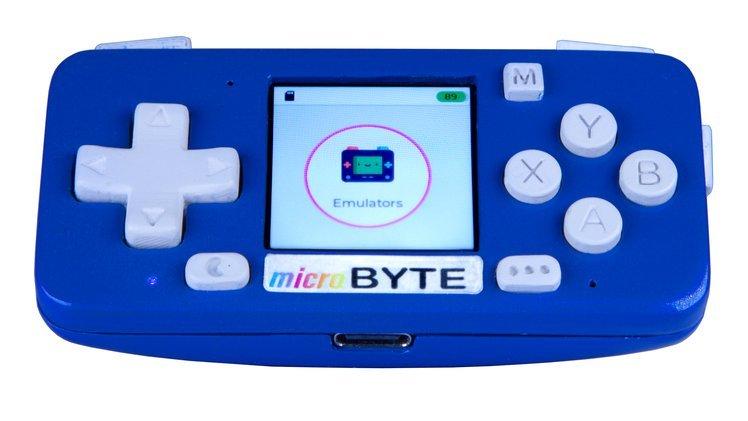In this article we look at an interesting project which uses a ESP32 and creates a tiny retro gaming console.
The console
The MicroByte is a hand-held, open-source retro-console, which can emulate games from the NES, GameBoy, GameBoy Color, Game Gear, and Sega Master System. The battery life is quotes as 6 to 7 hours and it has a 1.3″ IPS screen.
The MicroByte is controlled by an ESP32-WROVER E microcontroller. This means that the hardware is fully compatible with the Arduino IDE.
The console comes in at 78 x 17 x 40 mm. This makes it one of the most compact games consoles you can purchase.
Here is the console

Specifications
The all important specifications of the device
- Processor: ESP32 Wrover E
- Two main cores with a max frequency of 240 MHz and an ultra low power core
- 8 MB of RAM
- 16 MB of flash
- Integrated Wi-Fi and Bluetooth antenna
- Display: ST7789 IPS Screen
- 1.3″ diagonal
- 240 x 240 pixel resolution
- 60 Hz max refresh frequency
- Sound: On-board speaker powered by a MAX98357AETE+T I²S amplifier
- Storage: MicroSD card slot
- Controls: 13 onboard buttons, including:
- 8 Inductive direction and action buttons with rubber membranes
- 3 additional buttons (Start, Select, and Menu)
Supported Emulators
Like any retro gaming system one of the most imprtant features is what emulators does the hardware support and run. The microByte supports the following.
- NES
- GameBoy
- GameBoy Color
- GameGear
- Sega Master System
There are also some emulators that are in development – Atari and ScummVM
Here is the brilliant contra running on the console

On top of this is their an arduino library and also micropython support
Links
The device is available on crowdsupply from https://www.crowdsupply.com/byte-mix-labs/microbyte
You can buy one without an SD card and USB cable for $45 or you can pay $60 and get the sd card and cable. This option also comes in 3 different case color options.
At the crowdsupply link above you can find many useful resources including firmware, PCB design files and schematics and STL files for the enclosure and button caps

